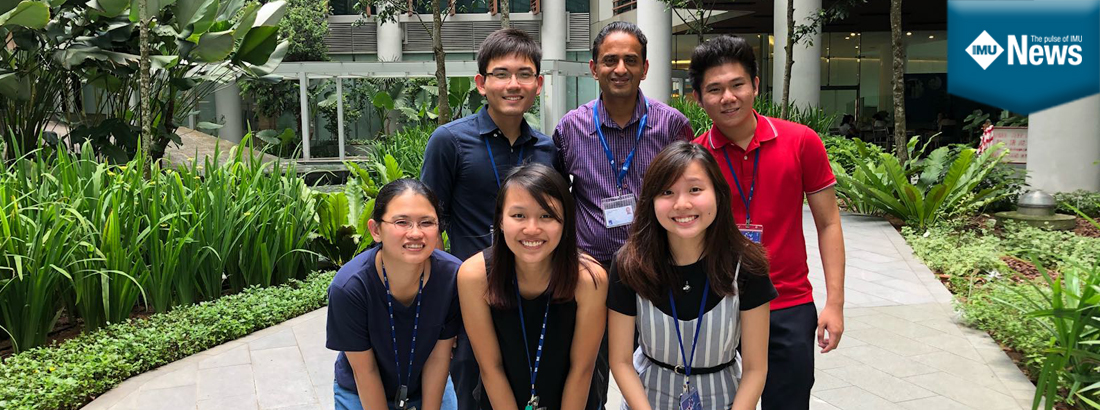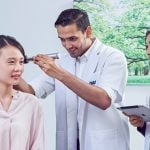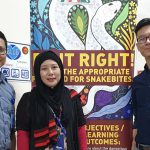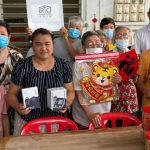I am currently undertaking a Bachelor’s degree in Biomedical Science at International Medical University (IMU). During this programme, I was given a freedom to choose my internship placement for a period of 2 – 3 months, starting from February 2018. That is when I stumbled upon Bioinformatics Institute (BII), Singapore.
| BII was set up by the Agency for Science, Technology and Research (A*STAR) for more than a decade, and it is conceived as the computational biology research and postgraduate training institute as well as a national resource centre in bioinformatics within the Biomedical Research Council (BMRC) of A*STAR. Through both practical and theoretical approaches, BII seeks to illustrate the biomolecular mechanisms that underlie biological phenomena, and to develop computational methods to support various discovery processes. Through collaboration with the BMRC, A*STAR research institutes and multinational research and development (R&D) organisations, it has resulted in extensive exchange of scientific knowledge and interaction which will make Biopolis a significant biomedical research hub in Asia. |
I am honoured to be able to work under the supervision of my principal investigator, Dr Prakash Arumugam from the Translational Research Division in BII. Dr Prakash once joined the renowned geneticist, Prof Kim Nasmyth’s laboratory as a postdoctoral fellow. In Dr Prakash’s laboratory, various molecular biology techniques are applied to perform chemogenomic profiling in yeast. Both forward and reverse chemogenomics are used. A genome-wide screen is performed by determining fitness data of a defined library of bar-coded yeast mutants in the presence of a bioactive compound. We analyse novel compounds present in the A*STAR’s Natural Product Library (NPL) and bioactive compounds from collaborators. There are also some other collaborative experiments that I am not involved in. 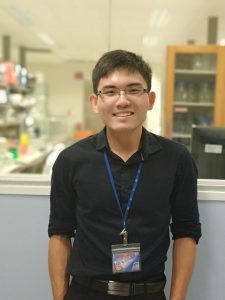 Dr Prakash’s laboratory has established a significantly enhanced version of yeast two-hybrid (Y2H) assay. In this version of Y2H, the ABC transporter-related genes are eliminated, resulting in a yeast mutant that is highly permeable to small molecules. Besides a substantial increase in the sensitivity of the assay, it also demonstrated the relationship of each ABC transporter gene to the sensitivity of the assay. The findings on the binding interaction of p53-Mdm2 in vitro was also published, which might allow us to gain insight into the molecular mechanism of the regulatory effects on p53 by Mdm2. As Sir David Lane, the chief scientist of A*STAR who discovered p53, one of the most important tumour suppressor genes, is interested in finding out the possible interaction of p73 in our enhanced version of Y2H assay, we decided take on this challenge, and hopefully it can unveil some crucial facts that can answer some of the most puzzling questions in oncology study. It is very exciting to obtain a result that is relevant and possibly a ground-breaking discovery. However, as an intern, I have made some mistakes, especially in the first few weeks of the internship. I believe that the most valuable lessons are learnt from the mistakes that I have made. It was embarrassing, but it reinforced my knowledge through the strong impression made by every mistake. I even learned some recovery protocols that can come in handy in certain situations.
Dr Prakash’s laboratory has established a significantly enhanced version of yeast two-hybrid (Y2H) assay. In this version of Y2H, the ABC transporter-related genes are eliminated, resulting in a yeast mutant that is highly permeable to small molecules. Besides a substantial increase in the sensitivity of the assay, it also demonstrated the relationship of each ABC transporter gene to the sensitivity of the assay. The findings on the binding interaction of p53-Mdm2 in vitro was also published, which might allow us to gain insight into the molecular mechanism of the regulatory effects on p53 by Mdm2. As Sir David Lane, the chief scientist of A*STAR who discovered p53, one of the most important tumour suppressor genes, is interested in finding out the possible interaction of p73 in our enhanced version of Y2H assay, we decided take on this challenge, and hopefully it can unveil some crucial facts that can answer some of the most puzzling questions in oncology study. It is very exciting to obtain a result that is relevant and possibly a ground-breaking discovery. However, as an intern, I have made some mistakes, especially in the first few weeks of the internship. I believe that the most valuable lessons are learnt from the mistakes that I have made. It was embarrassing, but it reinforced my knowledge through the strong impression made by every mistake. I even learned some recovery protocols that can come in handy in certain situations.
For the other techniques that I did not have the chance to practice them hands-on, I tried to ask more questions to clear my doubts. To become a team player, I had to work independently and interdependently to improve the productivity of the team. Instead of bombarding my senior researchers with tons of questions, I decided to find out the answers through literature as this will relieve the burden of my teammates and increase my learning capacity in a short time.
I was asked to handle multiple experiments at the same time, which is very different from what I had been doing at IMU where the practical sessions are thoroughly guided and simple. Other than time management, I think it is also important to understand the protocols to facilitate the execution of the experiments. To date, I am capable to do molecular cloning and immunoprecipitation simultaneously with precision. In general, what has made this internship great is not solely about the cutting edge technology, it is also about the people around me, the learning-friendly environment, and my attitude towards learning. It was the thought-stimulating process that makes scientific research brilliant and interesting. I am grateful for this unforgettable experience.
| I am blessed and fortunate to have enrolled into this Biomedical Science programme. The faculty members and lecturers are excellent and passionate in teaching. The education is not just limited to scientific knowledge, but it also includes some other elements such as ethical consideration, critical thinking skills, and current trend in healthcare to ensure a student’s holistic development. I am convinced that in order to transcend the current research output of IMU, every research project handled by the students should be publication-oriented. Meanwhile, it is also necessary to carefully assess the value and the quality of each research experiment, with the final aim to benefit the scientific community and humankind. |
Written by Yap Wei Sheng




